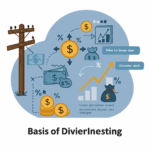Social Security is a federal program in the United States designed to provide financial support during retirement, disability, or upon the death of a family breadwinner. It operates as a pay-as-you-go system, where current workers’ payroll taxes fund benefits for current recipients. For many Americans, Social Security forms a foundational element of retirement income, supplementing pensions, savings, and investments. In 2024, over 72.5 million people receive benefits, with payments increasing by a 2.5% cost-of-living adjustment (COLA) to account for inflation. The program’s trust funds face long-term challenges, but it remains a critical safety net. This guide explores the basics of Social Security, including eligibility, benefits, calculations, trends, and its role in financial planning, offering educational insights for those seeking to understand this system without recommending specific steps.
What is Social Security?
Social Security, officially the Old-Age, Survivors, and Disability Insurance (OASDI) program, was established in 1935 to provide economic security amid the Great Depression. It has evolved to cover retirement benefits, survivor benefits for dependents, and disability income. Workers and employers contribute through payroll taxes under the Federal Insurance Contributions Act (FICA), with self-employed individuals paying via Self-Employment Contributions Act (SECA) taxes.
The program is administered by the Social Security Administration (SSA) and funded primarily by a 12.4% payroll tax split equally between employees and employers (6.2% each). Benefits are progressive, replacing a higher percentage of income for lower earners. In 2024, Social Security serves as a vital income source, with monthly benefits helping millions navigate retirement amid rising living costs.
Eligibility for Social Security Benefits
Eligibility for Social Security retirement benefits requires earning at least 40 credits over a working lifetime, with a maximum of four credits per year based on earnings. In 2024, one credit is earned for every $1,730 in covered earnings, up to four credits for $6,920 or more. Workers must be at least 62 to claim reduced benefits, with full retirement age (FRA) ranging from 66 to 67 depending on birth year—for those born in 1960 or later, it’s 67.
Spouses, ex-spouses, and dependent children may also qualify for benefits based on a worker’s record. Disability benefits require meeting medical criteria and having sufficient credits, while survivor benefits are available to widows, widowers, and children. Eligibility is verified through the SSA, and applications can be filed online or in person.
How Social Security Benefits Are Calculated
Benefits are calculated using the Average Indexed Monthly Earnings (AIME), based on the 35 highest-earning years, adjusted for wage inflation. The Primary Insurance Amount (PIA) is derived from AIME using a progressive formula with bend points: 90% of the first $1,226, 32% of earnings between $1,226 and $7,391, and 15% above $7,391 in 2024.
Claiming age affects the amount: at FRA, you receive 100% of PIA; before, it’s reduced (e.g., 30% less at 62 for FRA of 67); after, it’s increased by 8% per year up to age 70. Working while receiving benefits before FRA may reduce payments if earnings exceed $23,400, with $1 withheld for every $2 over the limit.
Average Benefits in 2024
In 2024, the average monthly retirement benefit is approximately $1,976, up from $1,927 due to the 2.5% COLA. For retired workers, it’s around $2,007, while the maximum benefit at FRA is $4,018. Spousal benefits average about $1,000, and disability benefits are $1,537. These figures vary by claiming age, earnings history, and location, reflecting the program’s role in providing baseline support.
Benefits of Social Security
Social Security offers several key features in retirement planning:
- Income Security: Provides a reliable, inflation-adjusted stream, replacing about 40% of pre-retirement earnings for average workers.
- Survivor and Disability Protection: Extends benefits to families, acting as life and disability insurance.
- Progressive Structure: Benefits lower earners proportionally more, promoting equity.
- Portability: Unaffected by job changes, ensuring continuity.
- Automatic Adjustments: Annual COLAs, like 2.5% in 2024, help maintain purchasing power.
These aspects make Social Security a foundational element, though not sufficient alone for retirement.
Drawbacks and Considerations
Despite its strengths, Social Security has limitations:
- Limited Replacement Rate: Often insufficient as sole income, necessitating additional savings.
- Solvency Concerns: Trust funds projected to deplete by 2034, potentially reducing benefits to 77% without reforms.
- Earnings Test: Reduces benefits for early claimants still working.
- Taxation: Up to 85% of benefits taxable for higher-income recipients.
- Claiming Decisions: Early claiming locks in lower payments permanently.
In 2024, with rising claims and policy debates, these factors underscore the need for integrated planning.
Trends in Social Security for 2024
Social Security in 2024 features several developments:
- COLA Increase: 2.5% adjustment boosts benefits for over 72.5 million recipients.
- Rising Claims: Retirement claims surged by over 276,000 in early 2024, indicating increased reliance.
- Wage Base Hike: Taxable earnings cap rose to $176,100, up $7,500 from 2024.
- Digital Shift: More online interactions for efficiency.
- Vulnerability Risks: Over half of recipients couldn’t afford missing half a payment, highlighting dependency.
These trends reflect ongoing adaptations to demographic and economic shifts.
How Social Security Fits into Broader Financial Planning
Social Security integrates with other areas: in retirement planning, it’s a base layer; in investing, it allows riskier allocations elsewhere; in finance, it influences budgeting; in insurance, it complements life coverage; in crypto, it provides stability against volatility. A comprehensive plan treats it as one pillar among many.
Resources for Further Learning
Visit SSA.gov for official details and calculators. Books on retirement include sections on Social Security, while tools like benefit estimators aid exploration.
In summary, Social Security offers essential retirement support through progressive benefits and adjustments. By understanding its workings and 2024 updates, readers can appreciate its place in financial education.


